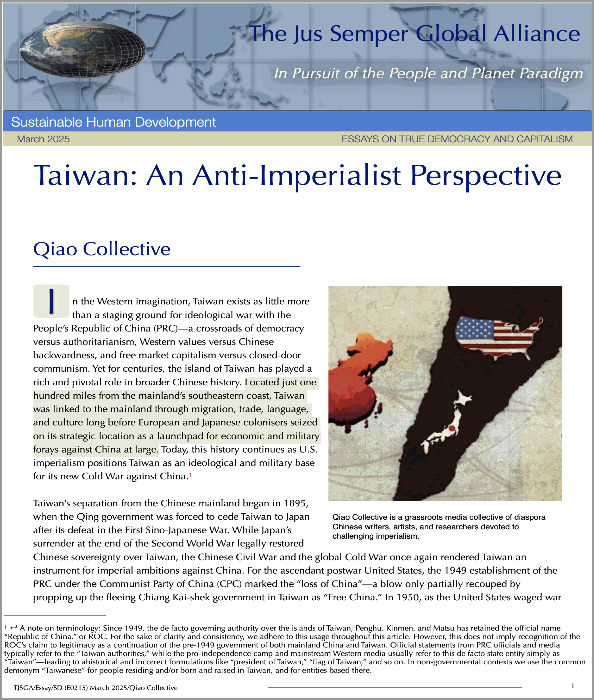Global Commodity Chains and the New Imperialism
Intan Suwandi, R. Jamil Jonna and John Bellamy Foster
Jus Semper’s core work has been from inception assessing the enormous disparities in hourly manufacturing labour costs, for equivalent work, between the metropolises and the emerging economies in the periphery of the global system. We have always performed our work for reasons of equity, using purchasing power parity compensation costs, under the context of equal pay for equal work of equal value We do this to expose the sheer exploitation of labour in peripheral economies for the maximisation of productivity and shareholder value of global corporations. In this way, we have published our annual reports on “Wage rate gaps for selected developed and emerging economies in manufacturing” since 2003, using data dating back to 1975. For this reason, we feel truly encouraged to continue our mission by now publishing a new essay that addresses the same issue of sheer labour exploitation of workers in the global South of the system from the perspective of productivity, using as the main indicator the unit labour costs of a select group of both Northern and Southern economies of the global system, namely Germany, Japan, United States and United Kingdom in the North and China, India, Indonesia, and Mexico in the South. Indeed, as the authors clearly explain and demonstrate in the following pages, the much higher rates of exploitation of workers in the global South has to do not simply with low wages, but also with the fact that the difference in wages between the North and South is greater than the difference in productivity. This paper further enlightens with rather strong evidence, anchored on theoretical and empirical research of commodity-chain analysis, our argument that the main driver of social inequality between North and South is the deliberate system of “Modern Slave Work”; a system imposed in the global South by the elites of both the centre and the periphery of the global capitalist system, to exploit the labour-value commodity chains to perpetuate what could best be described as a new global colonialism or imperialism.
For a full read of this brief, click here or on the picture to download the pdf file. |







